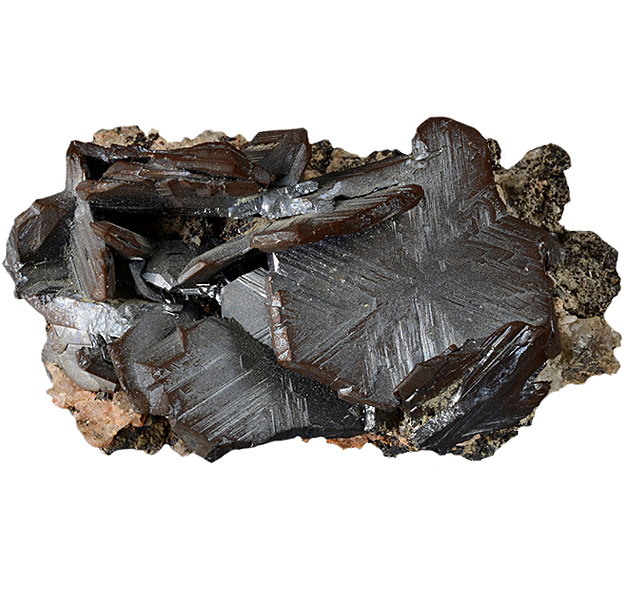
Fact sheet
Azurite is a hydrated copper carbonate mineral. It is a so-called secondary mineral, formed by the near-surface weathering of primary sulphide minerals. It is not an important copper ore mineral in itself, but can be a good indicator of copper sulphide minerals at depth.
This specimen of blue azurite on quartz is from Wheal Gorland, a locality famous among mineral collectors for the fine specimens of copper secondary minerals that were found there.
An illustration of this specimen appears in James Sowerby's British Mineralogy, one of the earliest and most important illustrated books on British minerals. Sowerby (1757 - 1822), who was a natural historian and illustrator, borrowed specimens from fellow collectors and dealers in order to illustrate his work. This specimen, borrowed by Sowerby from Philip Rashleigh, appears in Plate XCIV and has the description:
"The present specimen is a very rare and curious modification of carbonate of copper. At present I know of only two specimens, one belonging to P. Rashleigh, Esq., and the other in the possession of Mr. R. Phillips. The upper figure, which belongs to the former gentleman, is, as he observes, remarkable for being on the broken end of a large milky rock crystal...."
Chemical formula: Cu3(CO3)2(OH)2
Specimen no. TRURI: 1903.1.890
Location: Wheal Gorland
Grid Reference: SW 730 427
Mindat http://www.mindat.org/min-447.html
This Collection focuses on Cornwall and West Devon’s mineralogical and mining heritage. The specimens it features are drawn from the collection of the Royal Institution of Cornwall (RIC) held at the Royal Cornwall Museum (RCM).
This collaborative project involving the RCM, the Cornish Mining World Heritage Site and The Open University explores how access to the RIC’s mineral collection and the stories it can tell can be widened using digital technology. It includes radioactive minerals from Cornwall that would otherwise be inaccessible to the public for health and safety reasons.
Sample details
More from this collection











